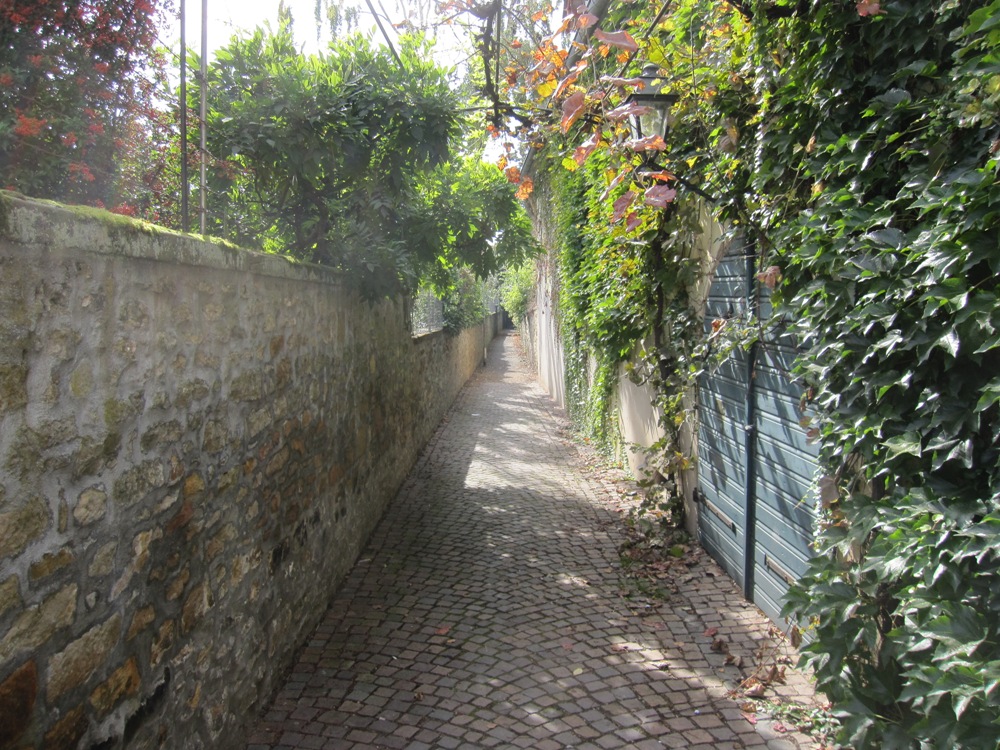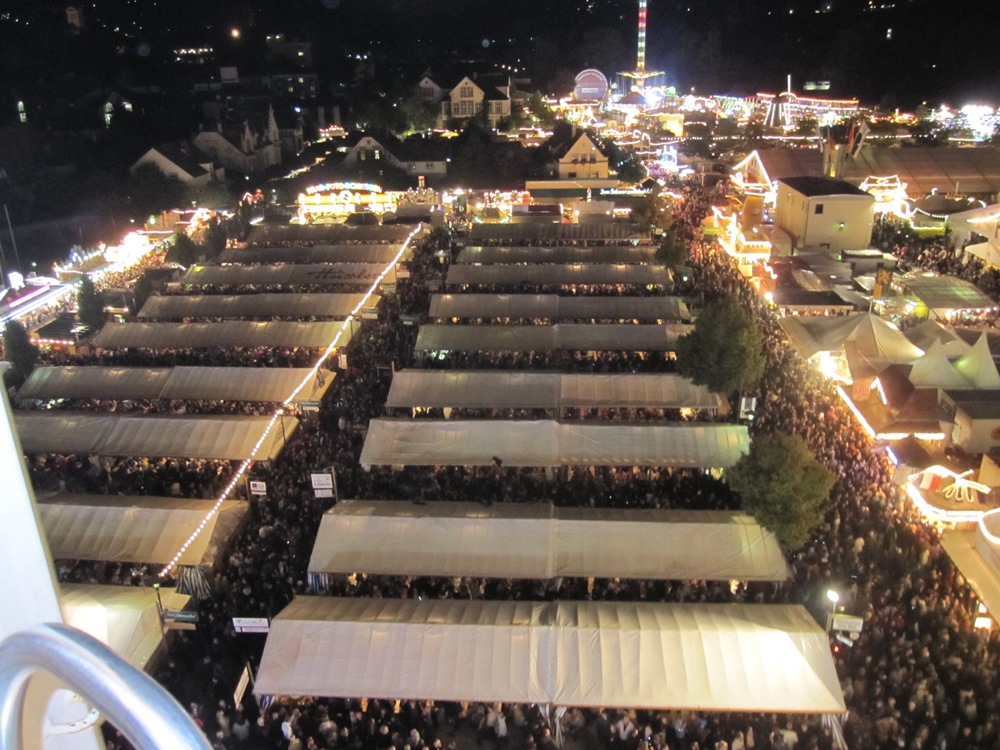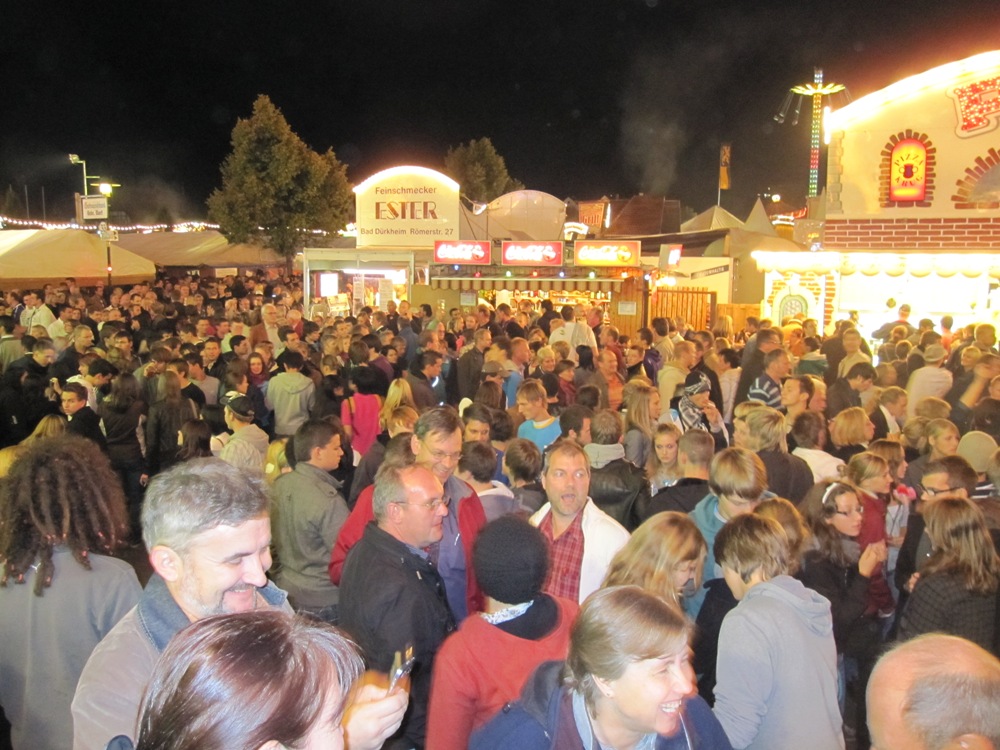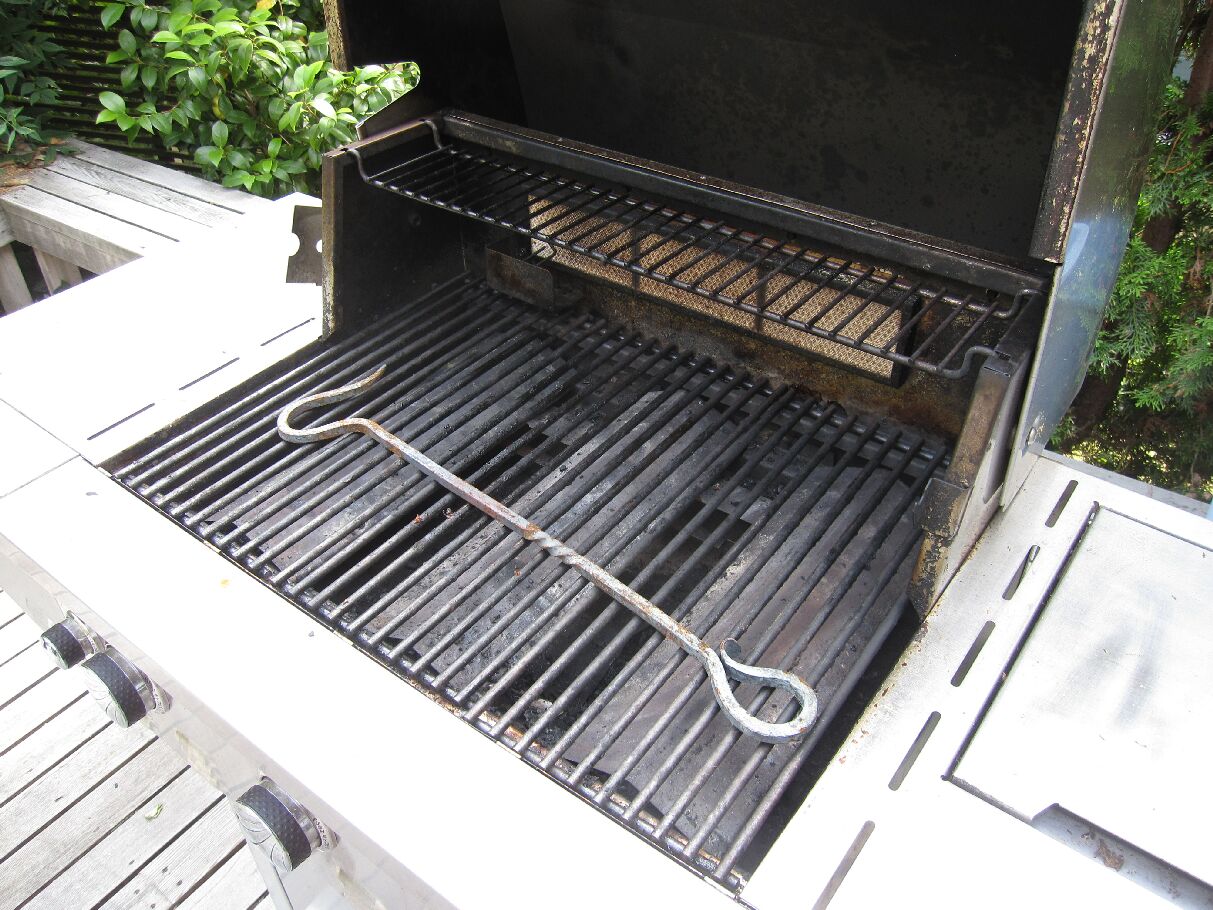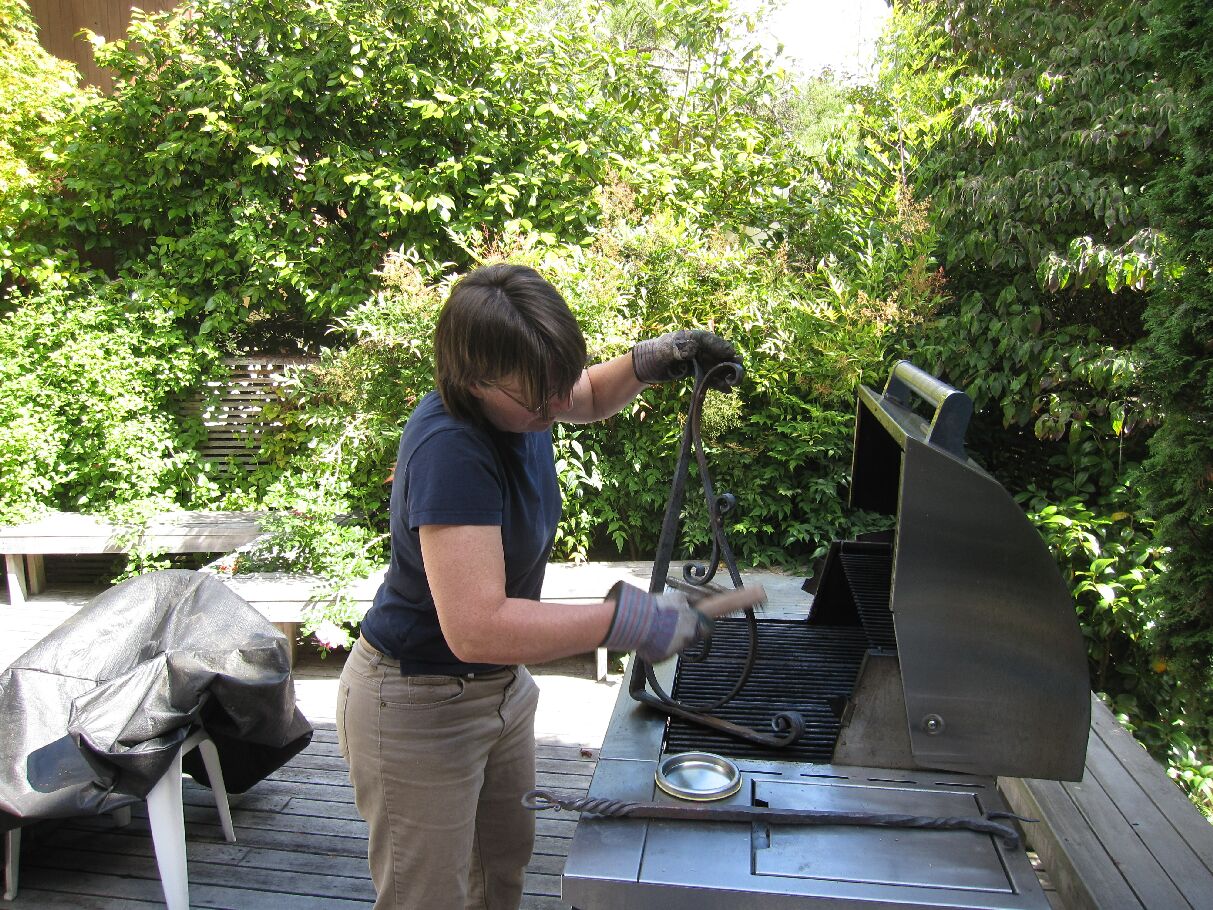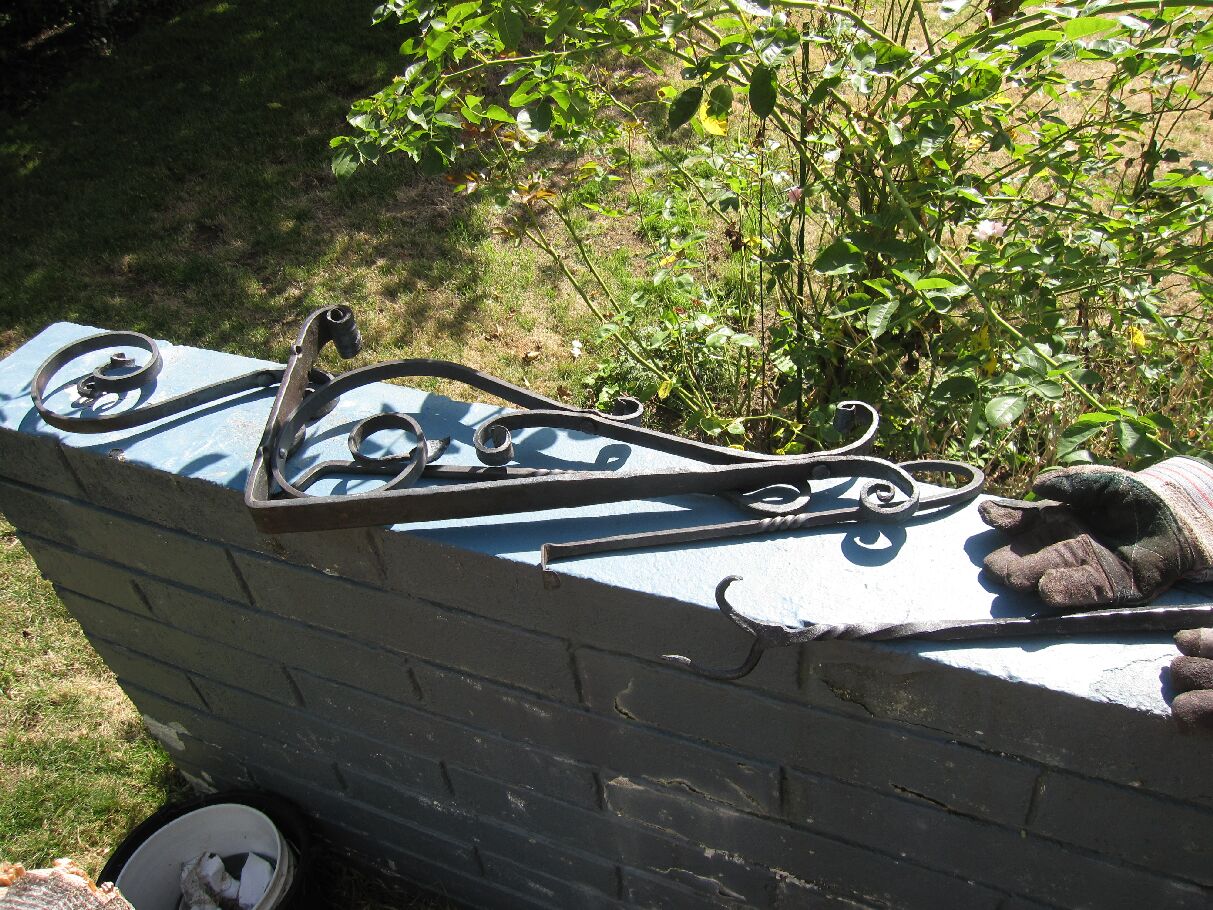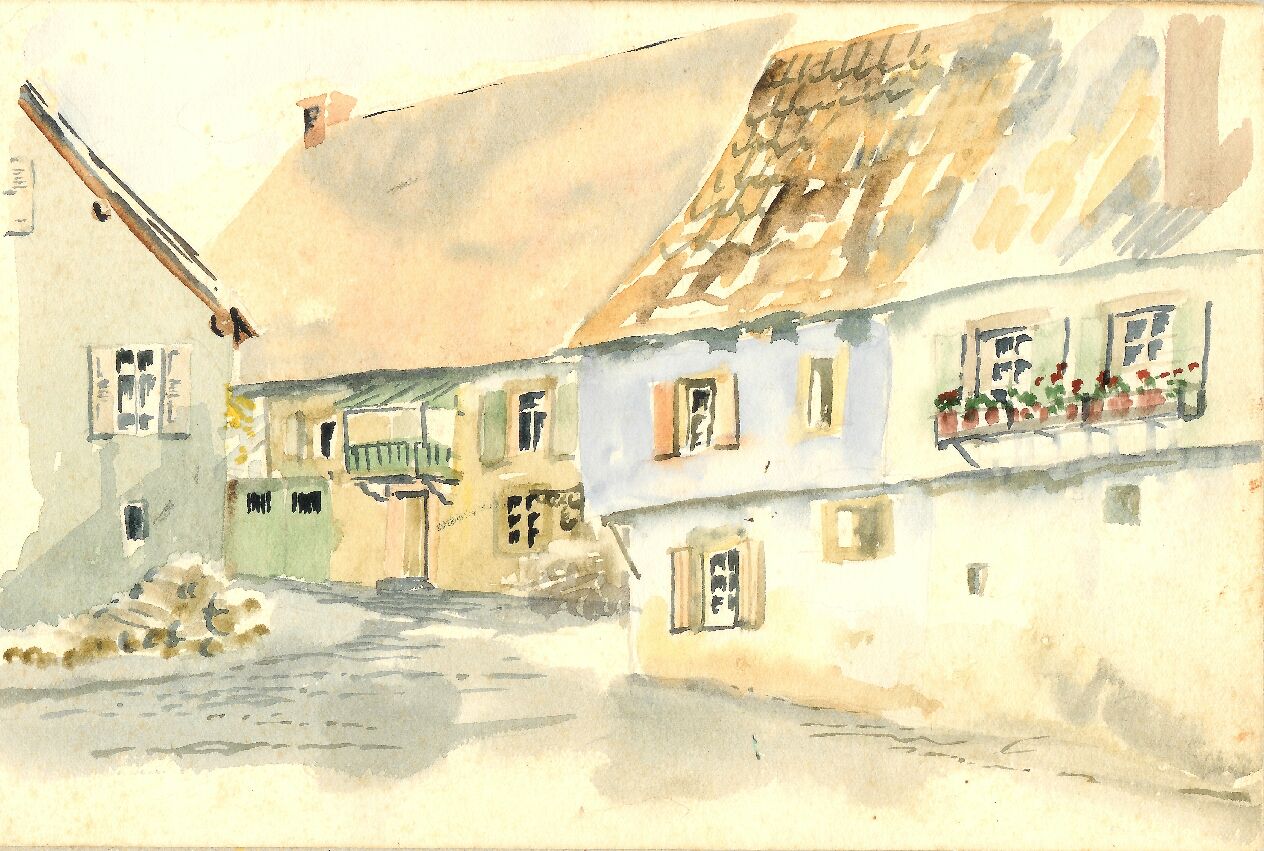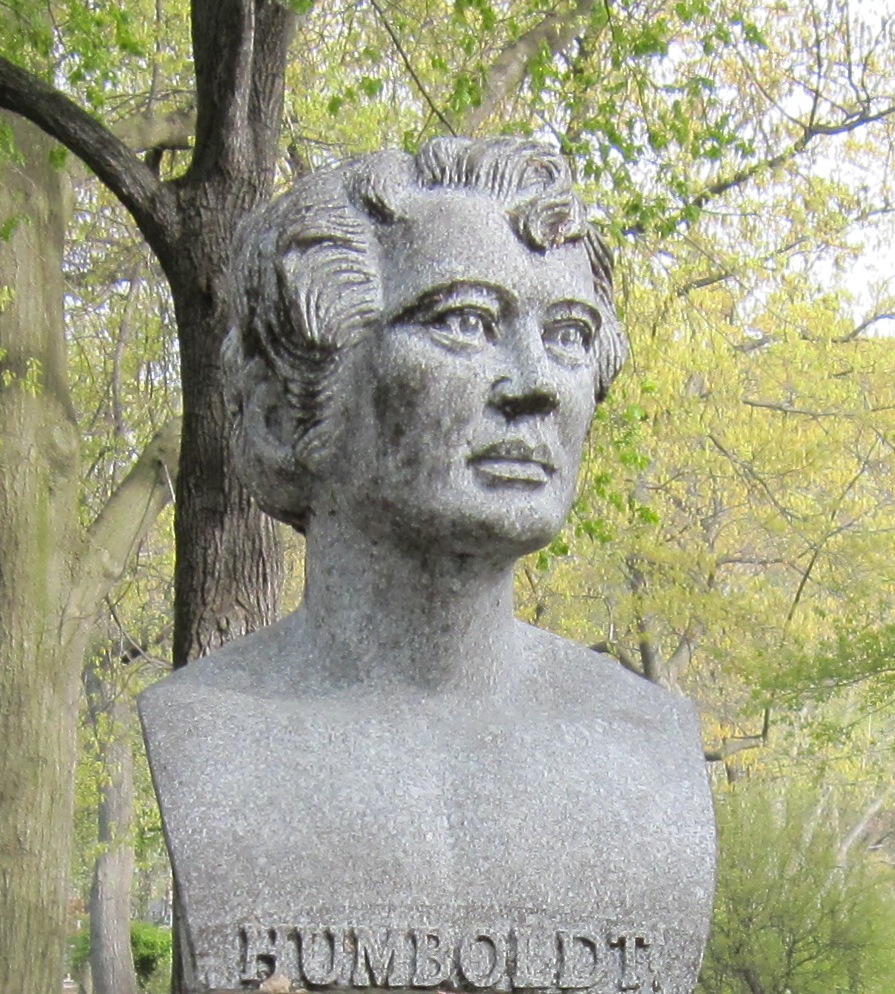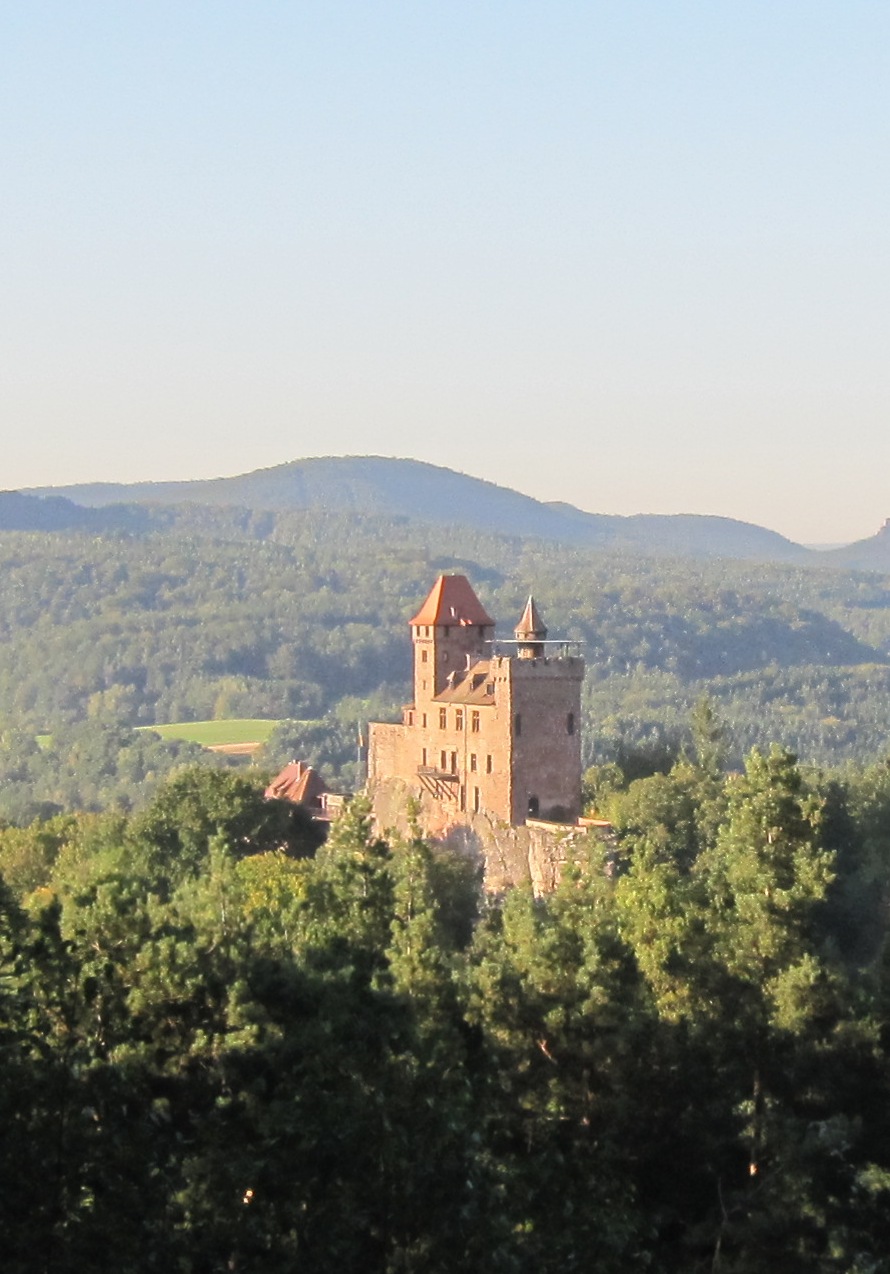 We are on our way to Berwartstein, a magnificent castle of many in the Wasgau mountains. My pen bumps and dives along the page as I try to take notes in an Opel going 140 kilometers per hour.
We are on our way to Berwartstein, a magnificent castle of many in the Wasgau mountains. My pen bumps and dives along the page as I try to take notes in an Opel going 140 kilometers per hour.
“There is Hambach Castle, we will go there another day,” Matthias nearly shouts above the road noise. “See it on the hill? In 1832, the whole region made a protest, not just Germans, but Poles and Czechs, too, a protest for a parliament with elections, and for a free press.” My cousin Matthias Weber is our guide again today, as he was yesterday when we made the wall walk in Freinsheim. Dave is in the front passenger seat, his eyes glued to the Autobahn as Matthias barrels us along. “What is that word, for the thing you put the baby in when you put him to sleep at night?”
“A crib?” I shout back.
“That’s right. Gut. A crib. So then, Hambach is called the crib of Democracy.”
I burst into laughter until I have to hold my stomach from the ache. Matthias is mystified. At last I regain enough composure to explain the distinction between a cradle and a crib, and he laughs along.
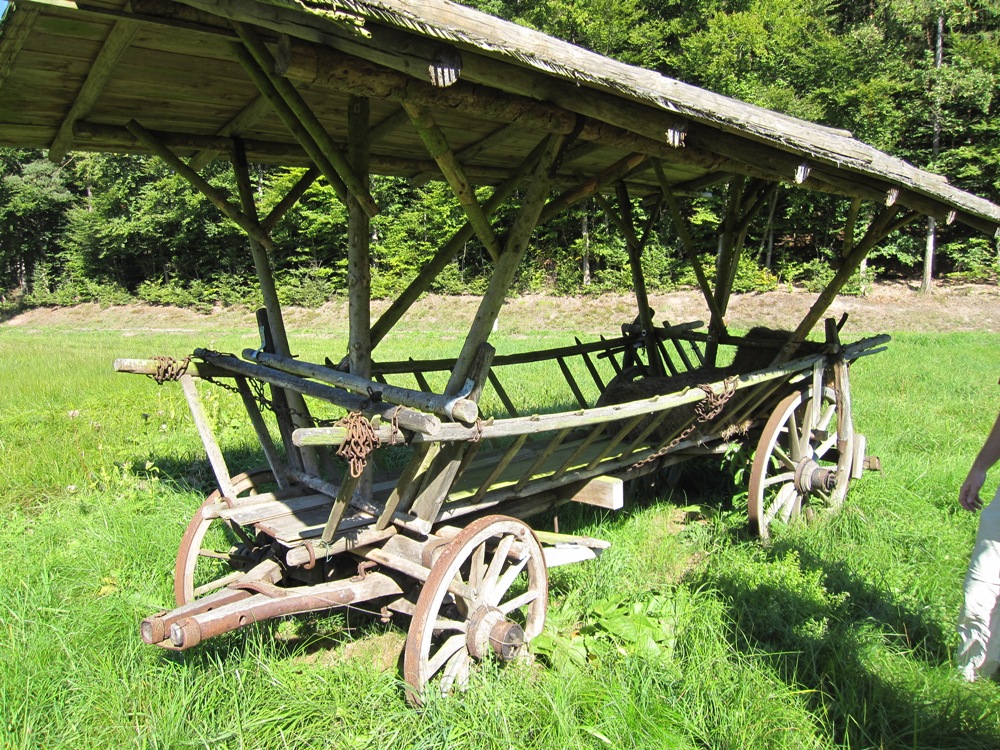 Later, as we wind along mountain roads, Matthias squeals the car to a stop at the sight of a “Leiterwagen” – a ladder wagon – on display in the middle of a field. It’s special to this region, Matthias tells me, and of very clever design, since it is made up of two ladders and two sets of wheels. Farmers would arrange the lightweight wagon in various ways for different uses. Because it is collapsible, it is easier to store. I am captivated as much by the wagon as I am by the crocuses in the field – in late Autumn! Beautiful purple crocuses sprinkled among the thick green grass – they’re called Herbst-Zeitlose, Matthias tells me. I’ve never seen crocuses that bloom in autumn before. I learn the translation later, back at the house – Timeless Autumn.
Later, as we wind along mountain roads, Matthias squeals the car to a stop at the sight of a “Leiterwagen” – a ladder wagon – on display in the middle of a field. It’s special to this region, Matthias tells me, and of very clever design, since it is made up of two ladders and two sets of wheels. Farmers would arrange the lightweight wagon in various ways for different uses. Because it is collapsible, it is easier to store. I am captivated as much by the wagon as I am by the crocuses in the field – in late Autumn! Beautiful purple crocuses sprinkled among the thick green grass – they’re called Herbst-Zeitlose, Matthias tells me. I’ve never seen crocuses that bloom in autumn before. I learn the translation later, back at the house – Timeless Autumn.
 Ach ja, the food. The well-set Pfälzer table. Merrily, we feast.
Ach ja, the food. The well-set Pfälzer table. Merrily, we feast.  On the plate pictured here, the food is cooked to perfection by Manfred’s mother Marliese. We’re enjoying Saumagen (stuffed sow’s stomach), Leberknödel (liver meatballs) and Bratwurst, all served with mashed potatoes and sauerkraut. Und naturlich, Riesling
On the plate pictured here, the food is cooked to perfection by Manfred’s mother Marliese. We’re enjoying Saumagen (stuffed sow’s stomach), Leberknödel (liver meatballs) and Bratwurst, all served with mashed potatoes and sauerkraut. Und naturlich, Riesling  spritzers. The weather has been beautiful. We ate in the courtyard of my cousin Manfred Weber’s home.
spritzers. The weather has been beautiful. We ate in the courtyard of my cousin Manfred Weber’s home.


